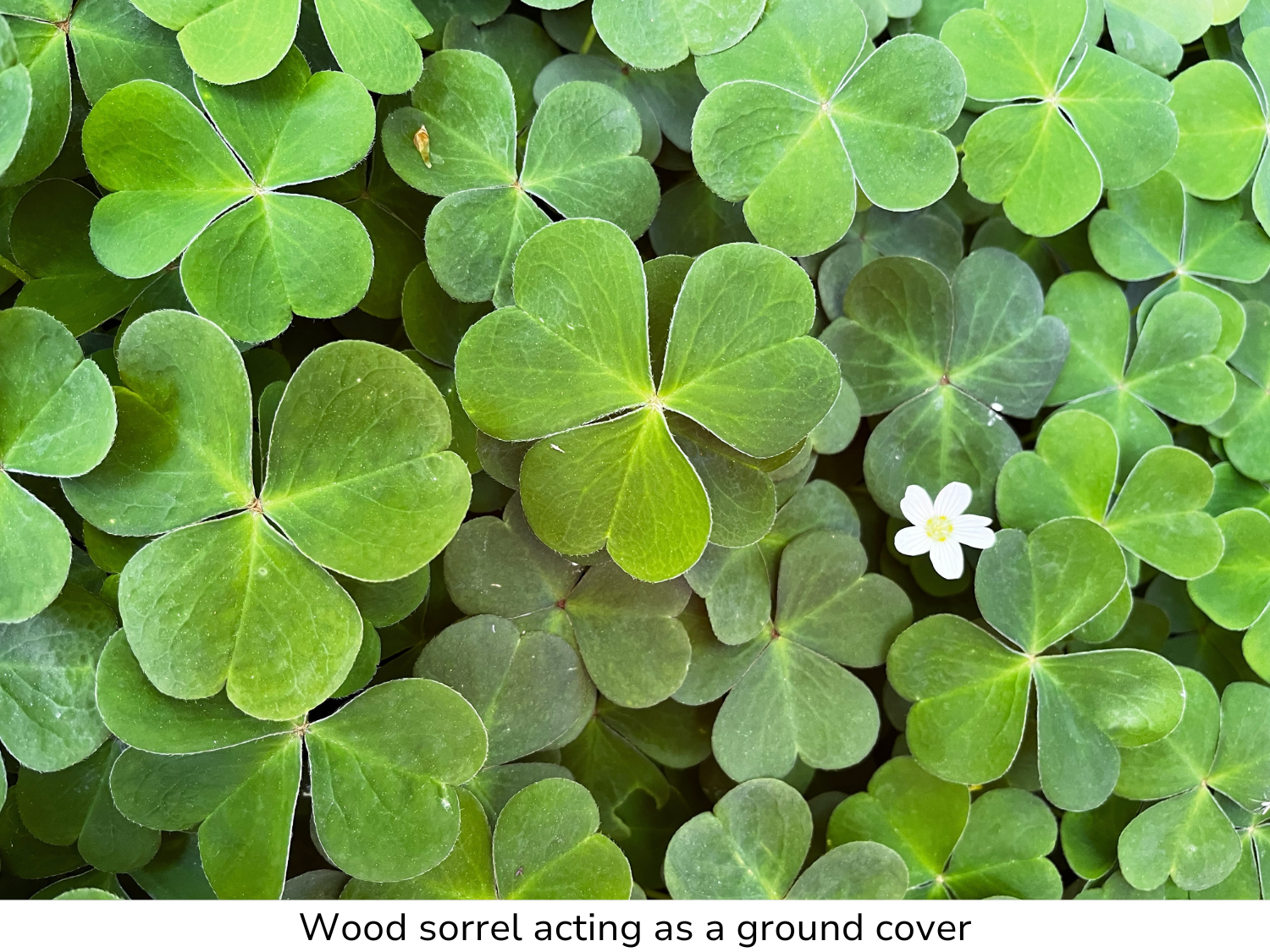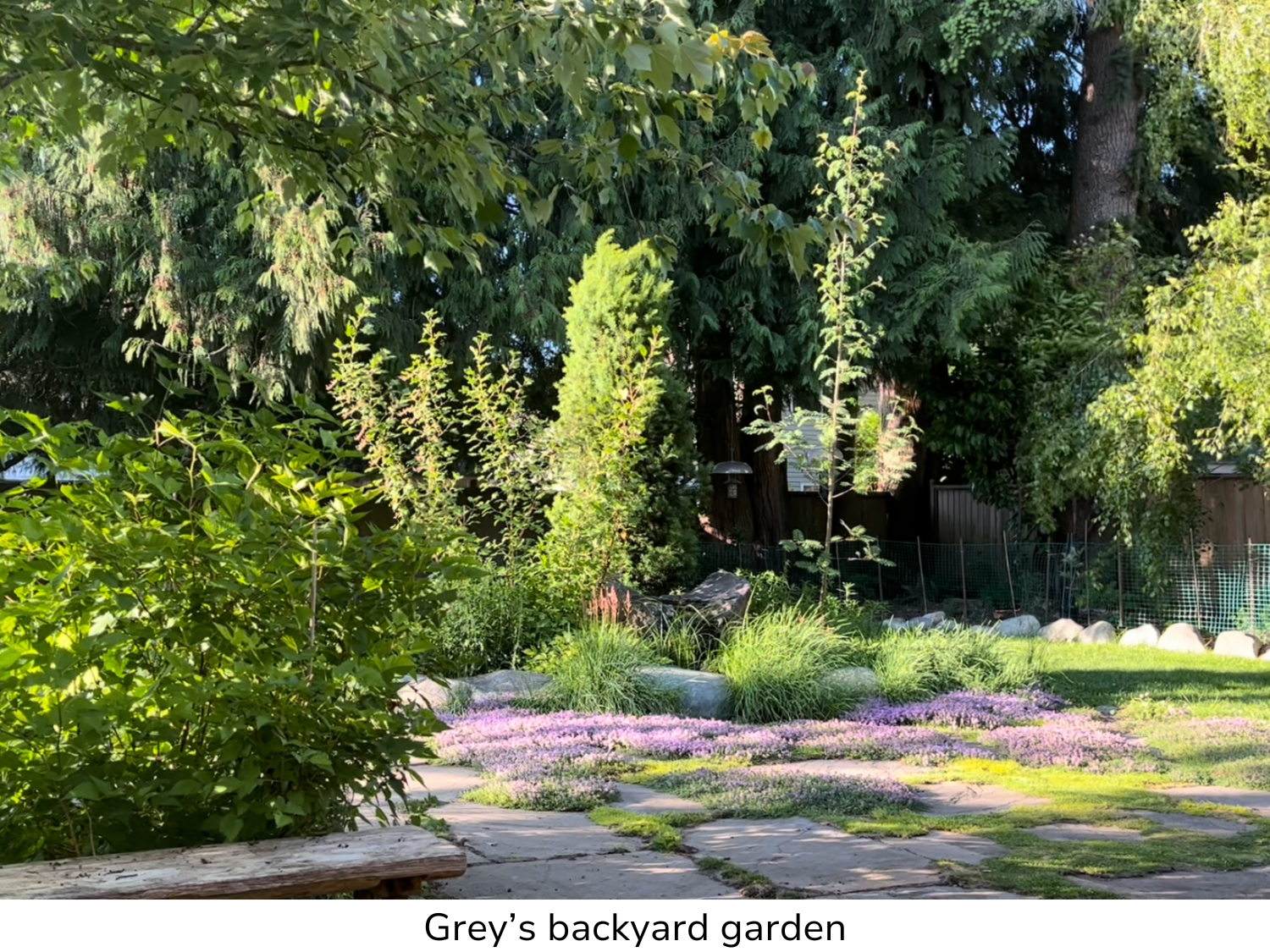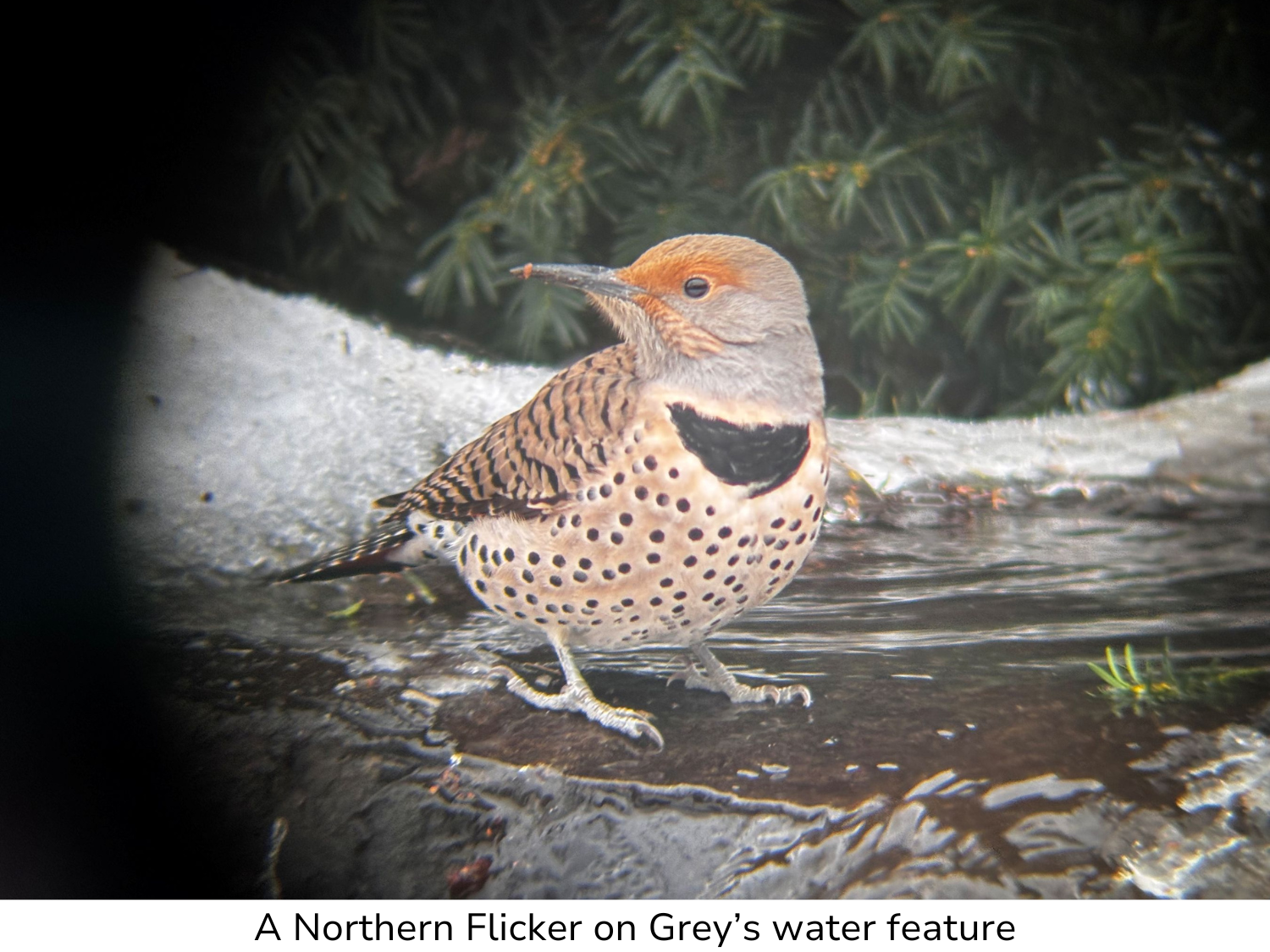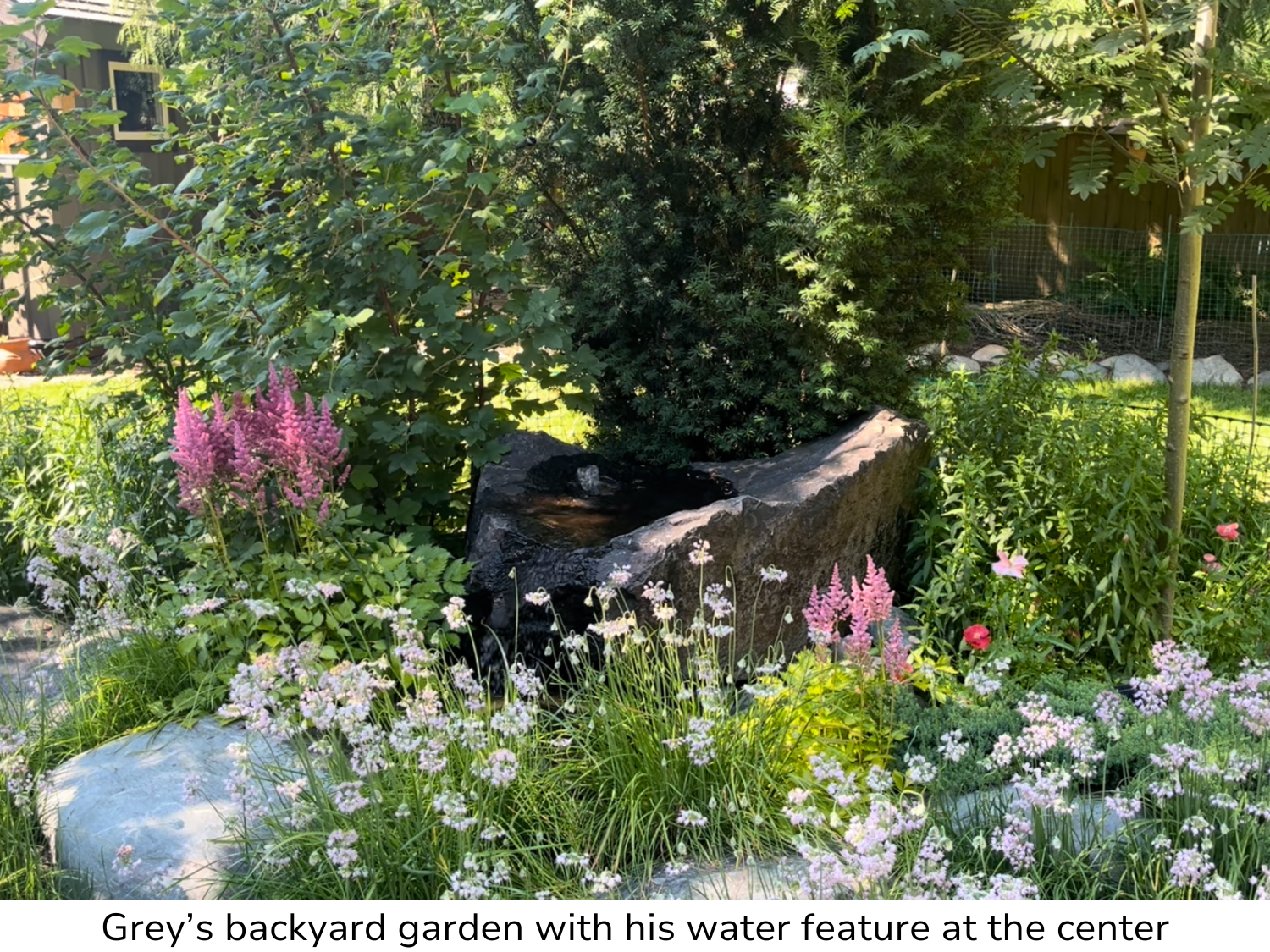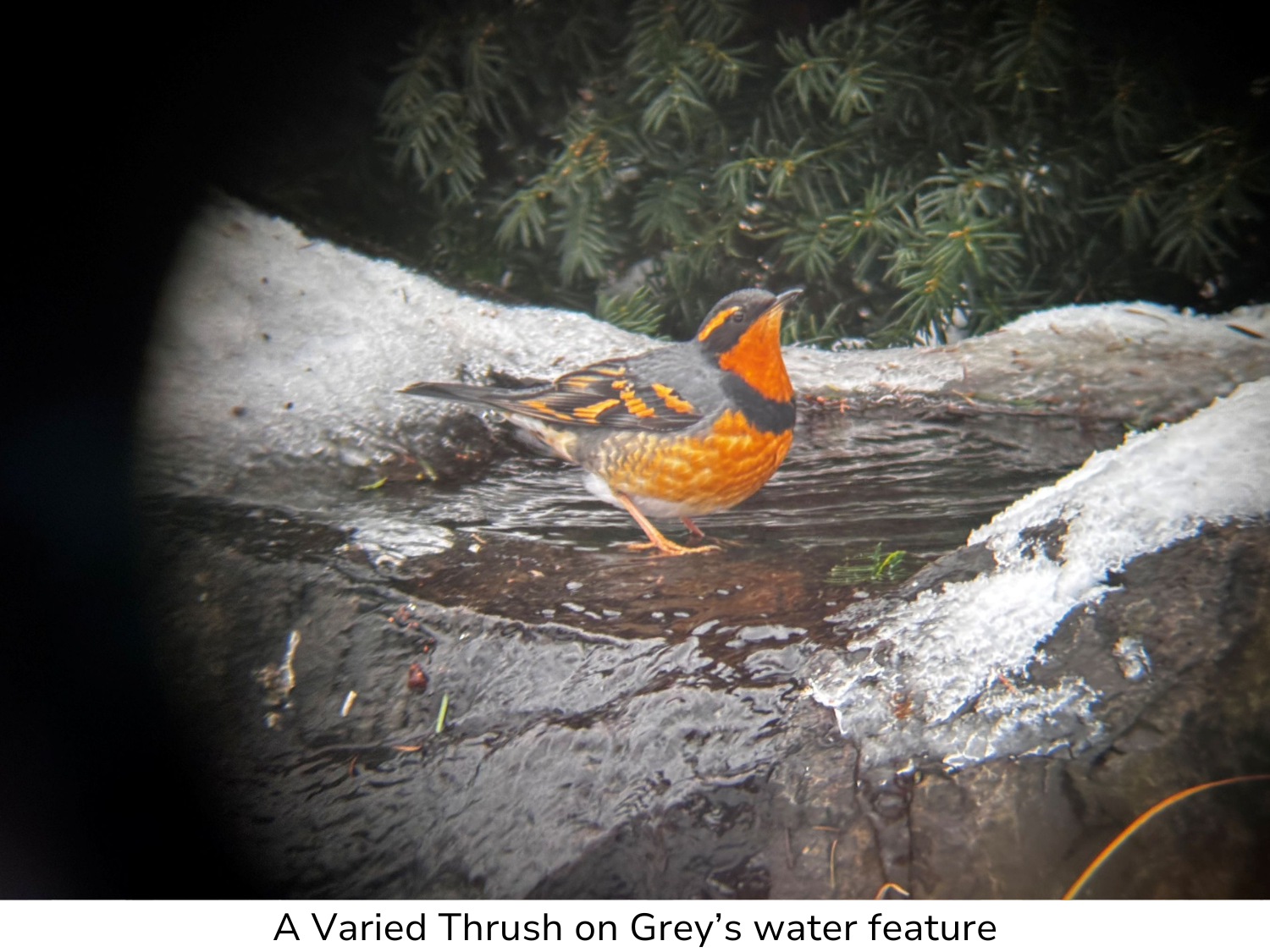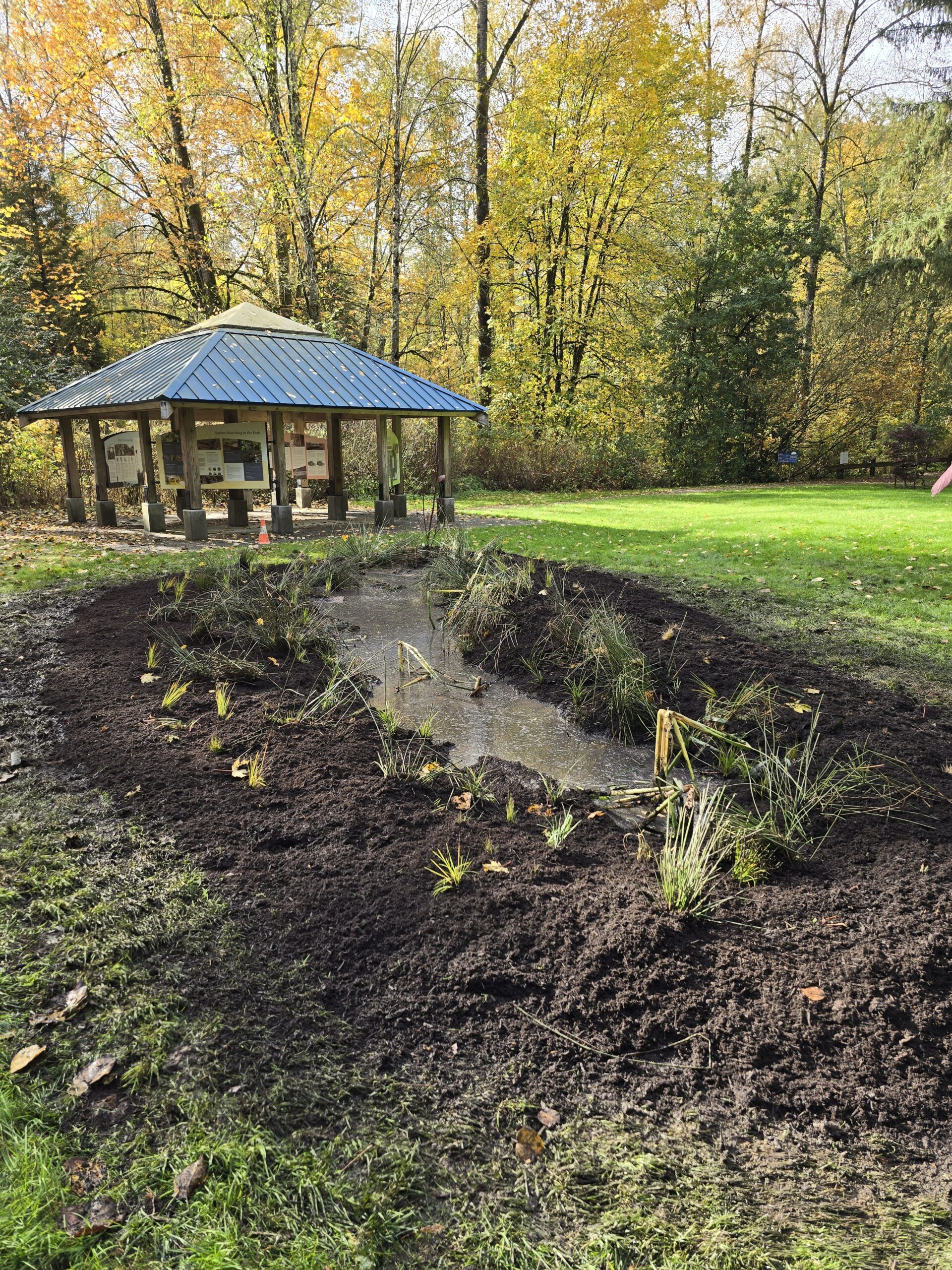Grey’s Four-Step Approach to Gardening
1. Plant trees
Luckily, his property already had two big, well-established trees when he moved in – a Western Redcedar and Douglas-fir, both standing at about 100 feet tall. To introduce variety, he planted deciduous trees and tall shrubs, including vine maple, Douglas maple, Pacific dogwood, and birch.
2. Plant shrubs
To provide additional food and shelter for birds, Grey incorporated a diverse mix of shrubs up to 15 feet tall. His selections included salmonberry, red elderberry, osoberry, red-osier dogwood, mock-orange, and Nootka rose, creating layers of habitat within his garden.
3. Plant ground covers
Native ground covers are helpful with soil moisture retention, erosion prevention, and weed suppression. Kinnikinnick is one of Grey’s favourites because it produces berries for birds to eat and stays green year-round. Another one is wood sorrel, which blooms in spring with delicate flowers that hummingbirds love.
4. Plant flowers
To attract pollinators and add vibrant color, Grey selected native flowers such as Douglas’ aster, yarrow, and lupine.
